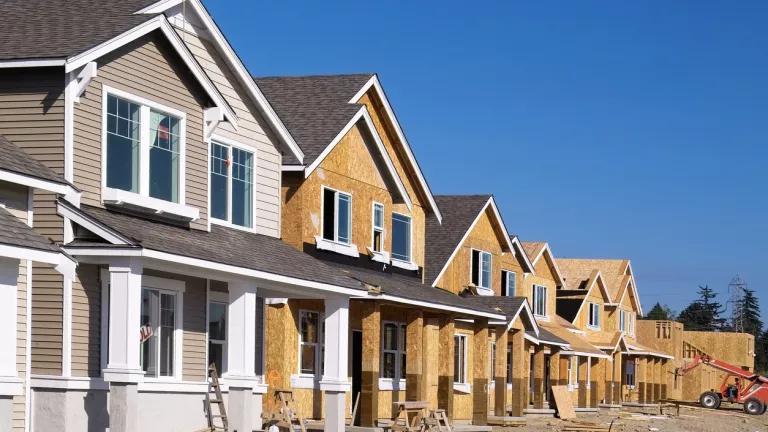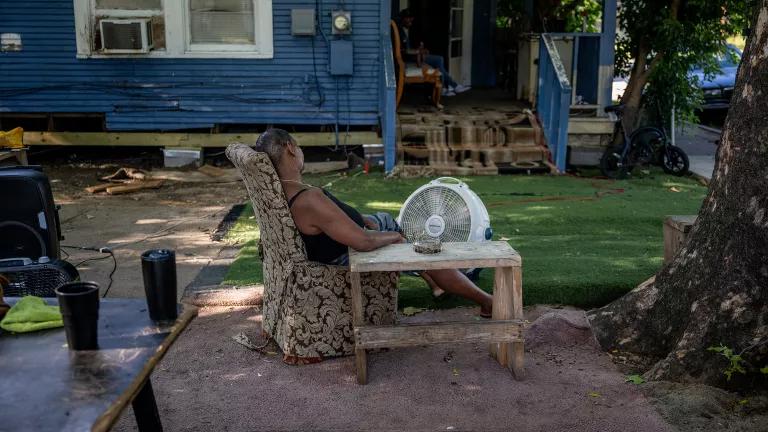DOE Confirms What We Knew: Latest Energy Codes Save Big
Newly constructed homes that comply with the most recent energy codes will save more than 9 percent in savings compared to those built to previous versions of the codes, according to new analysis by the Department of Energy.

Newly constructed homes that comply with the most recent energy codes (2021 for residential buildings and 2019 for commercial buildings) will save an average of more than 9 percent compared to those built to previous versions of the codes, according to a new analysis by the Department of Energy. That adds up to big savings for states.
If states update their standards to reflect the new code requirements in homes, residents of those homes would, cumulatively through 2040, save more than $74 billion in energy cost savings while avoiding 435 million metric tons of carbon pollution, equivalent to the emissions from burning a billion barrels of oil.
The 2021 International Energy Conservation Codes for residential and commercial buildings were developed over the past few years through a process that included local governments, code officials, energy efficiency advocates, industry representatives, builders, and others. The Department of Energy’s preliminary analysis puts a finer point on the energy, cost, and carbon savings that the residential code updates will generate nationally, compared to the previous version of the code (the 2018 IECC):
- 9.38 percent annual site energy use intensity (i.e., the energy use as shown on a utility bill)
- 8.79 percent annual source energy use intensity (i.e., the energy required to power a building including energy used for generation and distribution)
- 8.66 percent of annual energy cost
- 8.66 percent of carbon emissions
DOE also recently released a savings determination for the ASHRAE 90.1-2019 standard for new commercial buildings, which found savings as follows:
- 4.7 percent site energy use intensity
- 4.3 percent source energy use intensity
- 4.3 percent annual energy cost
- 4.2 percent carbon emissions
Overall, ASHRAE 90.1-2019 will save a cumulative $51 billion in energy cost savings and 405 million metric tons of carbon emissions through 2040.
The 2021 IECC for residential buildings is significantly more of an upgrade in efficiency than any of the other most recent codes. The 2018 residential IECC had less than 2 percent energy savings compared to the 2015 IECC, and the 2015 IECC saved only around 1 percent as compared to the 2012 version. DOE’s analysis shows that the latest version of the minimum model energy code is moving in the right direction—though not quickly enough. In order to meet the Biden administration’s goals of at least 50 percent reduction in economy-wide greenhouse gases by 2030, and net zero emissions economy-wide by 2050, new construction must be zero energy and zero emissions as soon as possible.
One good starting point is the Residential Zero Energy Appendix, which provides an optional pathway for local code adoption that will result in residential buildings that will produce as much clean energy as they consume over the course of a year. However, DOE’s preliminary analysis does not include savings that are generated by adopting the appendix, since it is optional. It would be extremely useful for DOE to quantify the energy, cost, and carbon savings from adopting the Zero Energy Appendix, as this is key data needed by cities and states during the code adoption process.
Once DOE’s preliminary analysis is finalized, which is likely to happen by later this summer, states have two years to certify that they have reviewed their current energy codes and made a determination as to whether they find it appropriate to revise their code to meet or exceed the newest code.
Completion of this analysis sets the starting point for many jurisdictions—but history has shown us that states and cities need far more support in order to adopt, enforce, and comply with updated energy codes. More than half of all states still follow the 2009 energy code, which is outdated and unnecessarily wastes energy in new buildings. The Biden Administration’s recent plans to create jobs and decarbonize buildings both strongly support better energy codes, but the executive branch can do even more by updating standards for new homes financed with government-backed loans, expanding technical assistance programs to states to adopt new codes, and increasing support for code compliance and enforcement. It can also encourage states and cities to adopt an even more efficient standard for new homes, like ASHRAE 90.2.
Congress must act, as well, both through robust budgets to DOE and other agencies that support energy codes, and through incentives to builders to construct better buildings. Updating Section 45L of the tax code would provide a modernized incentive to builders to construct homes that exceed the efficiency requirements of the 2021 IECC, helping to move the market to where it needs to be to promote a low-carbon future.
We now know that the 2021 residential and the 2019 commercial energy codes truly are the best ones yet–but a code doesn’t save energy until it’s adopted and enforced at the local level. The time is now for action at the federal, state, and local level to ensure better buildings for years to come.



